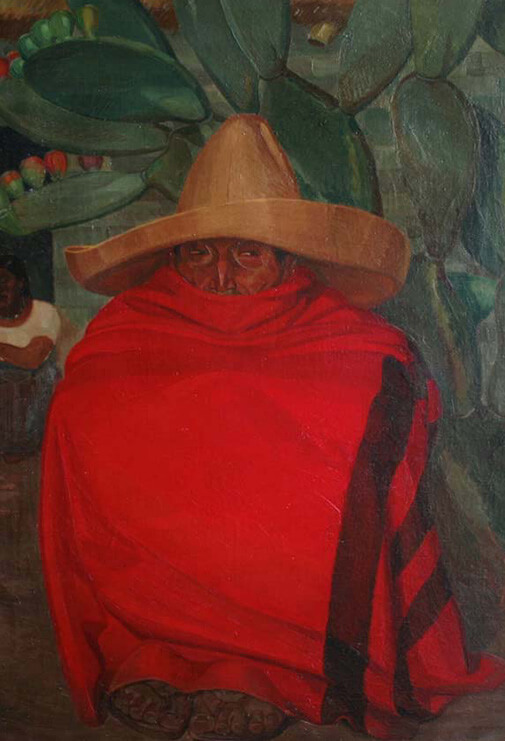- Vol. 04
- Chapter 11

ON EL SARAPE ROJO 1918
Alberto Garduño, a Mexican artist, died in 1948. Compañero in the monumental glorification of the civil war that tore through Mexico earlier that same century, Garduño rides a white stallion alongside others — Rivera, Orozco, Siqueiros — whose monuments stamp walls with symbols of collective ghosts, shared hauntings. His oil paintings hang in museums. The nation’s history, the artist’s canvas. The images stand witness on and in public buildings. In paint and brushstroke, they chant, “Viva la Revolución Mexicana.” Flash point for so many other revoluciones to come.
Setting: the iconic desert. A background drenched in chlorophyll. A vegetable palette with darkening borders. In shades of green, the human eye discerns hues more varied, diverse, nuanced, and abundant than in any other slice of the color spectrum — an adaptation with its own adaptability: an advantage for the hunter, a defence against predators. Green is the color of my true love’s eyes. Lorca’s green, a gypsy green, verde que te quiero verde. The sap runs over the greening world.
Foreground, the sole figure of un muchacho sits bundled in arms and knees drawn close under a wide-brimmed woven hat that shields him from a too-harsh sun. His back to the green forest of nopales. Rural Mexico, los ranchos, el desierto, las montañas. Already, always nostalgic. The cactus blushes its reddening fruit, la tuna, the prickly pear, to shame the desert. In its sweet, seedy pulp, the blood-red fruit hoards summer rains from parched dusty earth. Garduño’s warrior sits, his back to a fibrous green wall that is la tierra for which, in which, which he fights. Is it a respite from battle or the defeat by betrayals or a moment captured in pigment of campesino life? The artist dips the figure in earth tones of umber, bares his eyes and toes, swaddles him in a blanket dyed bright crimson, a bursting wound that marks the target for a bullet fired many years ago.
